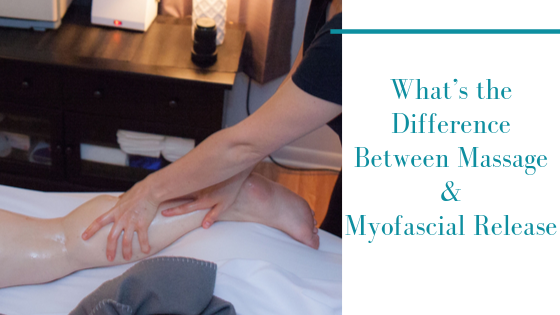If you’ve been to many massage establishments of any kind, you’ve probably seen numerous technique names, from the basic Swedish and Deep Tissue to Neuromuscular and Myofascial Release, and any number of the other thousand modalities in this field. My personal favorite though, is Myofascial Release (MFR). But what’s the difference between massage and MFR? Let me explain…
Massage is a broad term and can include a variety of techniques, forms, and strokes, but generally speaking, most people consider it to be long or short strokes and kneading with varying pressure. Pretty simple. These different styles and such can create a variety of benefits, from relaxation to tension relief within a muscle and can help to calm the nervous system. Myofascial release on the other hand, is very precise and is meant to address specific areas of pain, abnormal movements, and otherwise “fix” issues you might have.
Fascia is a thin, yet strong connective tissue that wraps around and intertwines literally every organ, muscle, bone, tendon, ligament, joint, and nerve; even down to the smallest of fibers within them. There is a very complex network of this tissue weaving its way throughout every aspect of the body, acting as a shock absorber and kind of like a glue to hold it all together. But because of this intricate weave, a problem within the fascia of one area can affect many other areas of the body as well. This can be quite complex, from an issue in the fascia of your foot affecting an area of your back, or the relatively simple and common problem – that when the fascia surrounding a muscle becomes tense, the muscle can no longer fully function because it’s being constricted by this sleeve of connective tissue. For example, if the band of fascia that wraps around the upper traps (upper shoulder area) is damaged in some way, through inflammation, an injury, or just from keeping your shoulders up to your ears every day when you’re stressed, this tension within the fascia begins to pull on that intricate network of fibers, potentially causing abnormal movement within the jaw joint (TMJ) leading to dysfunction and pain.
The real difference lies in how MFR is performed, so that this connective tissue is addressed. Instead of just massaging into the muscles, MFR uses slow, steady pressure along with sustained stretching to gently soften that fascia over and through the muscles, more effectively releasing the tension throughout. You’ll also notice that I won’t only work on the area of pain, but rather continue work out to other areas that may be the origin of the problem. As the fascia releases, the nervous system relaxes, and the muscle loosens, many people describe a warm, melting sensation. It really is an incredible technique that works beyond just the muscular tissue, to address the root cause of so many issues.
This is a technique I truly enjoy doing and I absolutely love seeing the results. MFR can be applied to almost any problem area on the body, but one of my favorite conditions to help is TMJ Dysfunction. If you’re suffering from pain in your jaw or anywhere else, don’t hesitate to book an appointment. Let’s see if MFR can provide the relief you’ve been looking for.









